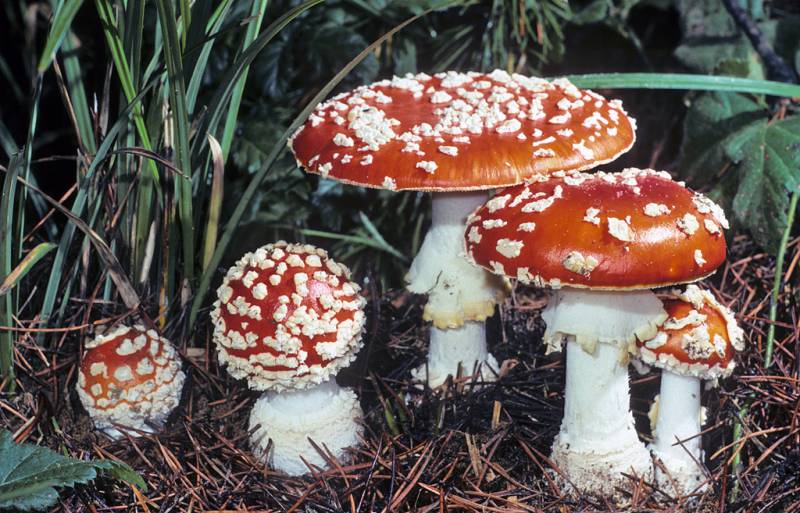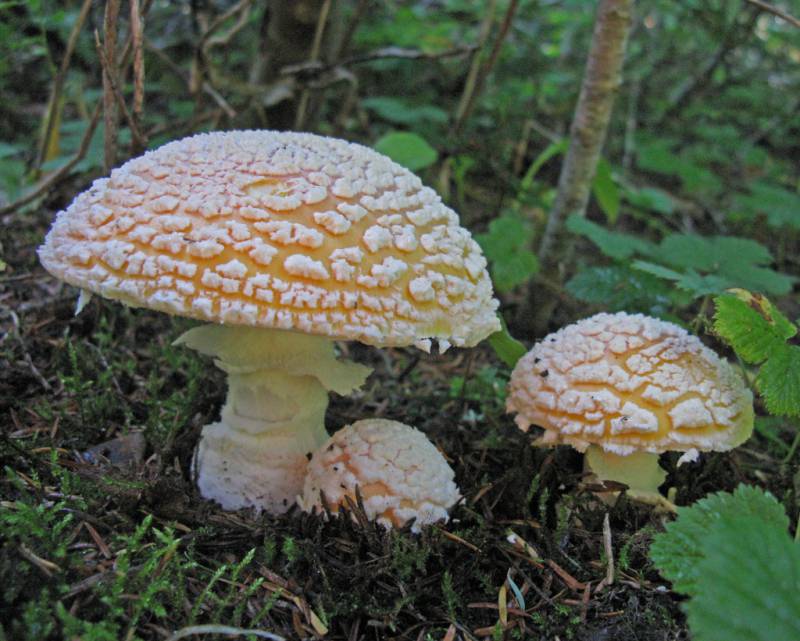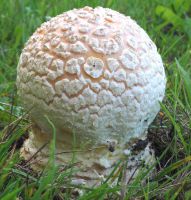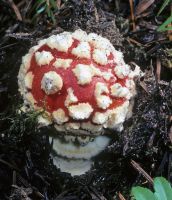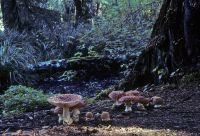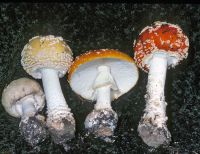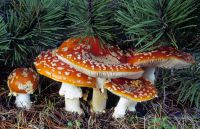Distribution: Broad
Habitat: Woodland
Substrate: Birch and conifers
Conservation Status: Not of concern
Edibility: Poisonous.
Poisonous.
Spores are white. Growth of up to 8 inches. Cap diameter of up to 12 inches. All of the forms have striate cap margins, rings that may or may not persist into maturity, and volvas in the form of rings of loose tissue that extend part-way up the stipe from a bulbous base. Along with A. gemmata, A. pantherina, and A. aprica, all contain ibotenic acid. Thus, they cause accidental poisonings but also are sought after by some who seek their psychoactive effects, and A. muscaria has been used ritualistically in areas such as Siberia. A. regalis (Fries) Michael is a related brownish to ocher species that has a boreal distribution, including Alaska.
Sources: Trudell, Steve and Joe Ammirati. Mushrooms of the Pacific Northwest. Portland, Timber Press, Inc. 2009. Roberts, Peter and Evans, Shelley. The Book of Fungi. Chicago, The University of Chicago Press, 2011.
PNW Herbaria: Specimen records of Amanita muscaria in the Consortium of Pacific Northwest Herbaria database.
CalPhotos: Amanita muscaria photos.

